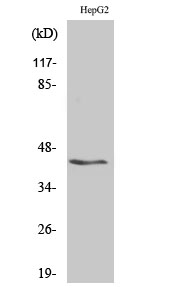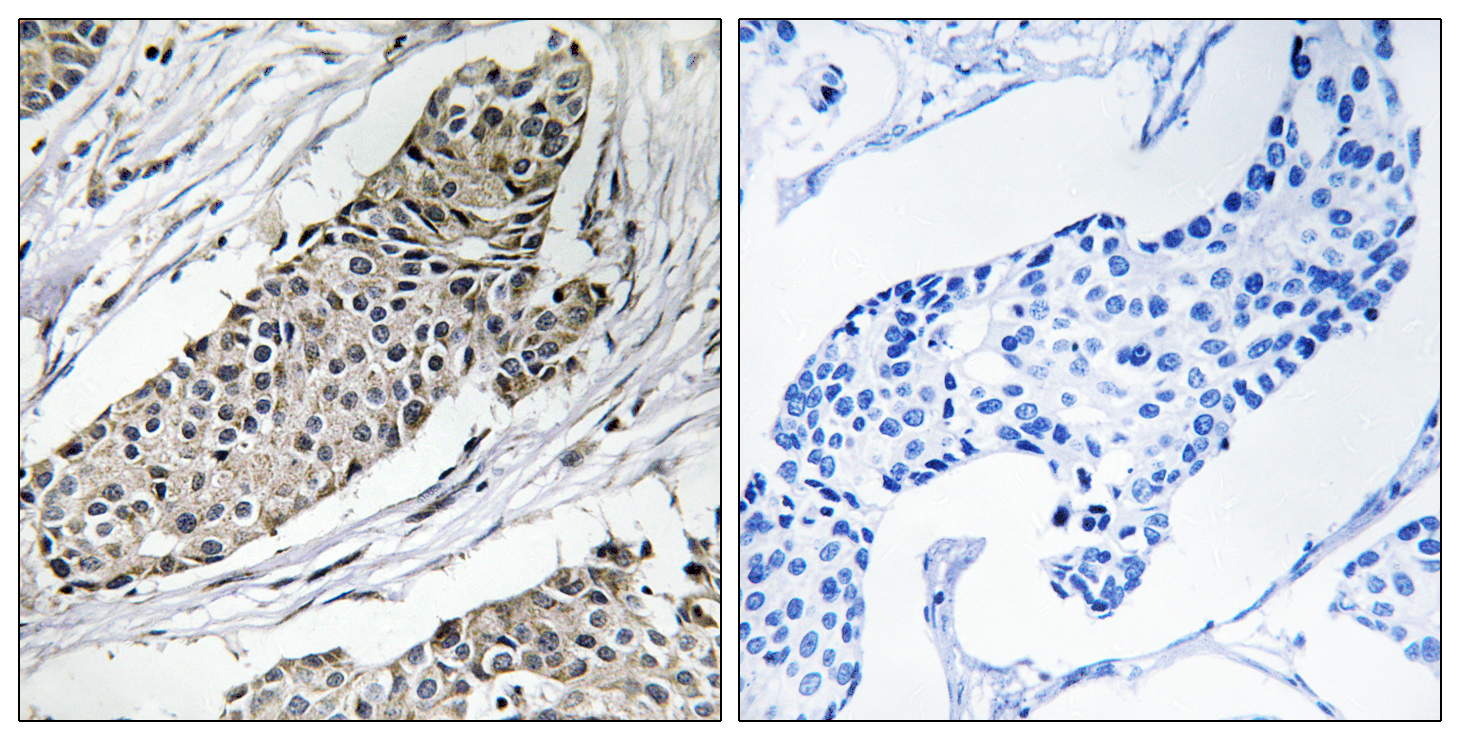KVβ.3 Polyclonal Antibody
- Catalog No.:YT2517
- Applications:WB;IHC;IF;ELISA
- Reactivity:Human;Mouse;Rat
- Target:
- KVβ.3
- Gene Name:
- KCNAB3
- Protein Name:
- Voltage-gated potassium channel subunit beta-3
- Human Gene Id:
- 9196
- Human Swiss Prot No:
- O43448
- Mouse Swiss Prot No:
- P97382
- Rat Gene Id:
- 58981
- Rat Swiss Prot No:
- Q63494
- Immunogen:
- The antiserum was produced against synthesized peptide derived from human KCNAB3. AA range:293-342
- Specificity:
- KVβ.3 Polyclonal Antibody detects endogenous levels of KVβ.3 protein.
- Formulation:
- Liquid in PBS containing 50% glycerol, 0.5% BSA and 0.02% sodium azide.
- Source:
- Polyclonal, Rabbit,IgG
- Dilution:
- WB 1:500 - 1:2000. IHC 1:100 - 1:300. ELISA: 1:10000.. IF 1:50-200
- Purification:
- The antibody was affinity-purified from rabbit antiserum by affinity-chromatography using epitope-specific immunogen.
- Concentration:
- 1 mg/ml
- Storage Stability:
- -15°C to -25°C/1 year(Do not lower than -25°C)
- Other Name:
- KCNAB3;KCNA3B;Voltage-gated potassium channel subunit beta-3;K(+) channel subunit beta-3;Kv-beta-3
- Observed Band(KD):
- 45kD
- Background:
- This gene encodes a member of the potassium channel, voltage-gated, shaker-related subfamily. The encoded protein is one of the beta subunits, which are auxiliary proteins associating with functional Kv-alpha subunits. The encoded protein forms a heterodimer with the potassium voltage-gated channel, shaker-related subfamily, member 5 gene product and regulates the activity of the alpha subunit. [provided by RefSeq, May 2012],
- Function:
- domain:Alteration of functional properties of alpha subunit is mediated through N-terminal domain of beta subunit.,function:Accessory potassium channel protein which modulates the activity of the pore-forming alpha subunit. Alters the functional properties of Kv1.5.,similarity:Belongs to the shaker potassium channel beta subunit family.,subunit:Forms heteromultimeric complex with alpha subunits.,tissue specificity:Brain specific. Most prominent expression in cerebellum. Weaker signals detected in cortex, occipital lobe, frontal lobe and temporal lobe. Not detected in spinal cord, heart, lung, liver, kidney, pancreas, placenta and skeletal muscle.,
- Subcellular Location:
- Cytoplasm .
- Expression:
- Brain specific. Most prominent expression in cerebellum. Weaker signals detected in cortex, occipital lobe, frontal lobe and temporal lobe. Not detected in spinal cord, heart, lung, liver, kidney, pancreas, placenta and skeletal muscle.
- June 19-2018
- WESTERN IMMUNOBLOTTING PROTOCOL
- June 19-2018
- IMMUNOHISTOCHEMISTRY-PARAFFIN PROTOCOL
- June 19-2018
- IMMUNOFLUORESCENCE PROTOCOL
- September 08-2020
- FLOW-CYTOMEYRT-PROTOCOL
- May 20-2022
- Cell-Based ELISA│解您多样本WB检测之困扰
- July 13-2018
- CELL-BASED-ELISA-PROTOCOL-FOR-ACETYL-PROTEIN
- July 13-2018
- CELL-BASED-ELISA-PROTOCOL-FOR-PHOSPHO-PROTEIN
- July 13-2018
- Antibody-FAQs
- Products Images

- Western Blot analysis of various cells using KVβ.3 Polyclonal Antibody

- Immunohistochemistry analysis of paraffin-embedded human breast carcinoma tissue, using KCNAB3 Antibody. The picture on the right is blocked with the synthesized peptide.



